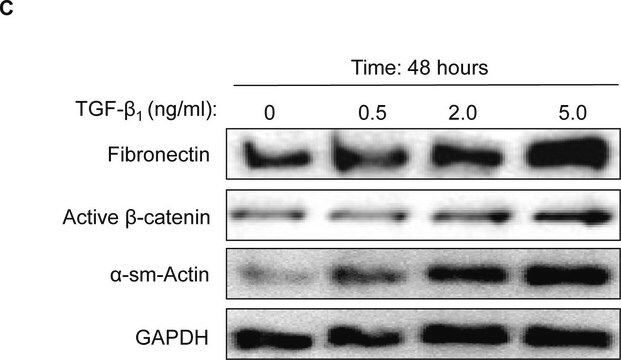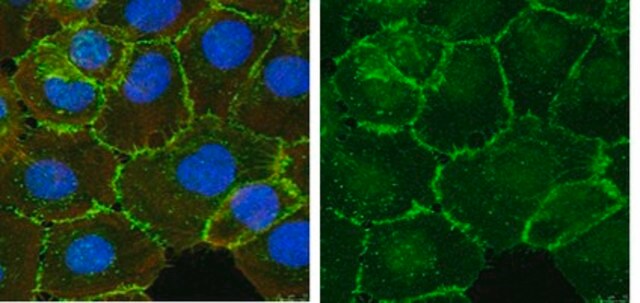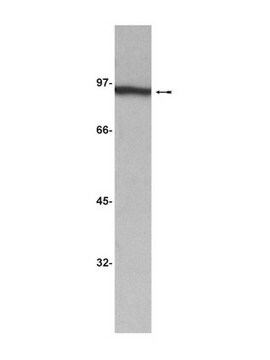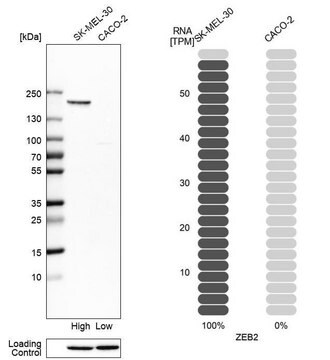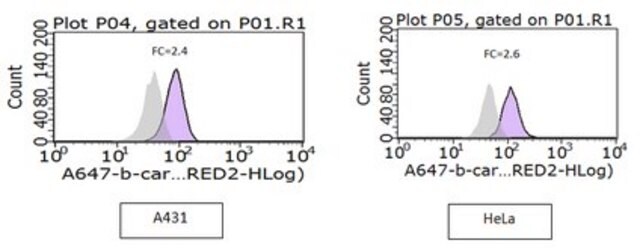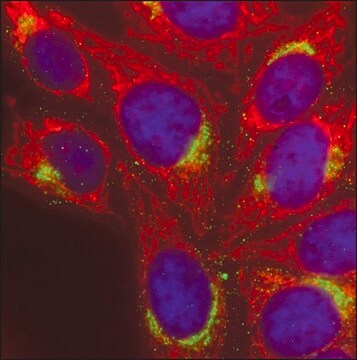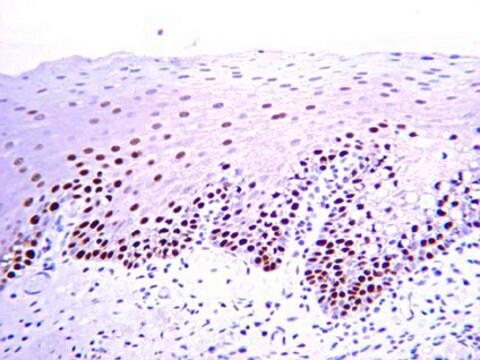05-665-AF488
Anti-Active-β-Catenin Antibody, clone 8E7, Alexa Fluor™ 488
clone 8E7, from mouse, ALEXA FLUOR™ 488
Sinônimo(s):
Catenin beta-1, Beta-catenin, Active-β-Catenin
About This Item
Produtos recomendados
fonte biológica
mouse
Nível de qualidade
conjugado
ALEXA FLUOR™ 488
forma do anticorpo
purified antibody
tipo de produto de anticorpo
primary antibodies
clone
8E7, monoclonal
reatividade de espécies
human, mouse
reatividade da espécie (prevista por homologia)
zebrafish (based on 100% sequence homology), rat (based on 100% sequence homology)
técnica(s)
flow cytometry: suitable
immunocytochemistry: suitable
immunohistochemistry: suitable
Isotipo
IgG1κ
nº de adesão NCBI
nº de adesão UniProt
Condições de expedição
wet ice
modificação pós-traducional do alvo
unmodified
Informações sobre genes
human ... CTNNB1(1499)
mouse ... Ctnnb1(12387)
rat ... Ctnnb1(84353)
zebrafish ... Ctnnb1(30265)
Categorias relacionadas
Descrição geral
Especificidade
Imunogênio
Aplicação
Flow Cytometry Analysis: 0.1 µg of this antibody from a representative lot detected Active-β-Catenin in 1X10E6 A431 and HeLa cells.
Immunohistochemistry Analysis: A 1:250 dilution from a representative lot detected Active-β-Catenin in human colon and human colorectal adenocarcinoma tissue.
The unconjugated version (Cat. No. 05-665) has been shown to work in WB, FC, ICC, IHC, IH(P).
Cell Structure
Adhesion (CAMs)
Qualidade
Immunocytochemistry Analysis: A 1:100 dilution of this antibody detected Active-β-Catenin in HeLa cells.
Descrição-alvo
forma física
Armazenamento e estabilidade
Outras notas
Informações legais
Exoneração de responsabilidade
Não está encontrando o produto certo?
Experimente o nosso Ferramenta de seleção de produtos.
Código de classe de armazenamento
10 - Combustible liquids
Classe de risco de água (WGK)
WGK 2
Ponto de fulgor (°F)
Not applicable
Ponto de fulgor (°C)
Not applicable
Certificados de análise (COA)
Busque Certificados de análise (COA) digitando o Número do Lote do produto. Os números de lote e remessa podem ser encontrados no rótulo de um produto após a palavra “Lot” ou “Batch”.
Já possui este produto?
Encontre a documentação dos produtos que você adquiriu recentemente na biblioteca de documentos.
Nossa equipe de cientistas tem experiência em todas as áreas de pesquisa, incluindo Life Sciences, ciência de materiais, síntese química, cromatografia, química analítica e muitas outras.
Entre em contato com a assistência técnica